How Do I Completely Uninstall Software On Windows?

A question I often get from Windows users is how to completely uninstall all traces of a program or app. Here’s what you need to know.
When you uninstall a program from Windows via Add or Remove Programs or with the program’s uninstaller, it leaves many remnants behind. Things left behind are folders, temp files, icons, registry entries, and more. If you want to uninstall all traces of a program completely, follow this guide to remove everything.
Note: Keep in mind this method isn’t for everyone, especially the later part where I manually clean entries from the Registry.
For this example, I’m uninstalling the Maxthon web browser – not because it isn’t a good browser but because I need to sacrifice an application to the uninstall gods for this article.
Revo Uninstaller
The “go-to” app I use to uninstall software on Windows is Revo Uninstaller Pro. Revo also offers a free version that includes fewer options but still does a good job of getting rid of extra entries of unwanted software.
Launch Revo Uninstaller, and you’ll see a list of the programs you have installed on your system. It also lists programs that aren’t listed in Add/Remove programs in Windows. Right-click the program you want to remove and click Uninstall.
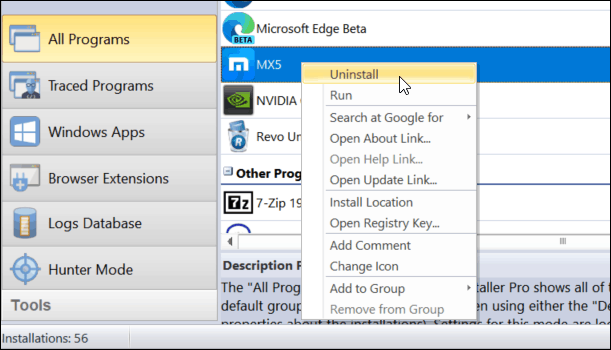

Then Revo will ask if you’re sure that you want to uninstall the program. By default, the options to create a System Restore Point and Full Registry Backup before the uninstall. It’s good to allow it to do it automatically every time you uninstall a program. This is important because if something goes wrong with the uninstall, you can easily restore your system and Registry. Click the Continue button.
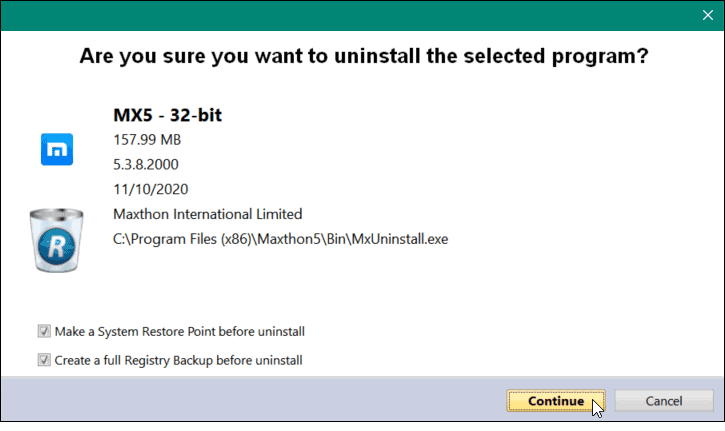

After safely backing up your system and Registry, the native uninstaller for the program you’re uninstalling will kick off. Simply follow the uninstall wizard.
After you complete the uninstall wizard, go back to Revo and click the Continue button.
Revo scans your system for leftover files and registry settings. You’ll be surprised how many entries native app installers leave behind.
Go through the list and check only the entries it found that are marked as blue. The other folders are system folders your system needs. This is why it’s so nice that Revo creates a restore point and Registry backup. After you select all the leftovers, click Delete.
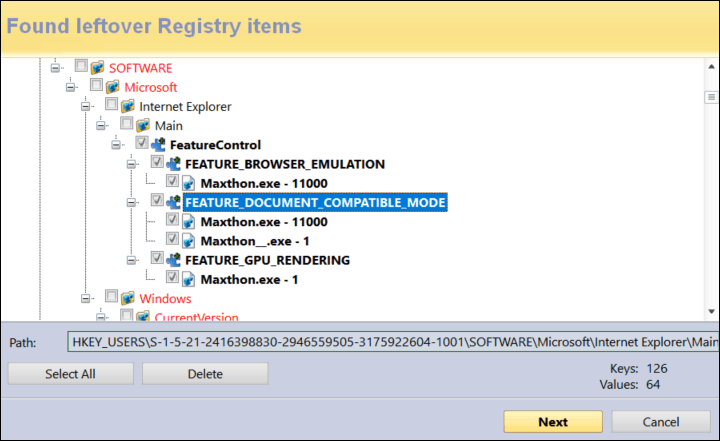

A verification message will come up asking if you’re sure. Click Yes.
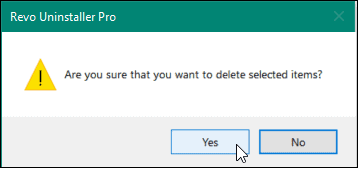

If there are other leftover files or folders, you’ll click Next and delete those, too.
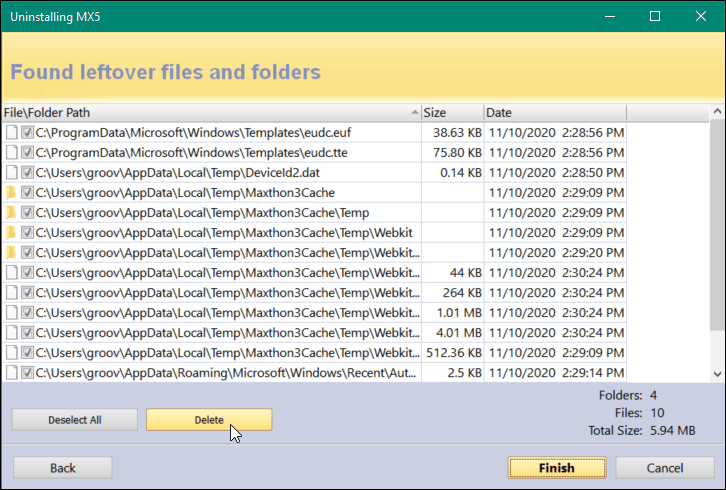

Voidtools’ Everything
Next, I use another one of my favorite utilities — Everything by Voidtools. Type in the name of the program you just deleted and remove all entries it finds. Another tip is to search for the name of the software company that made the app.
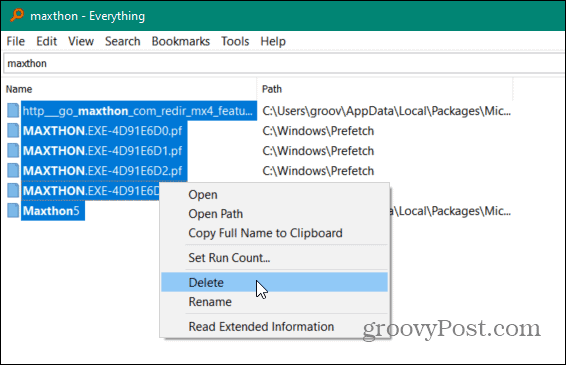

Manually Clean Registry
After that, the last thing I do to make sure all traces of the program are removed is to search the Registry and delete all entries of the program.
Hit the Windows key and type: regedit and
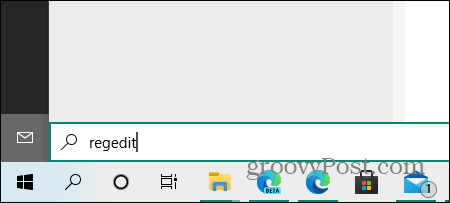

The Registry Editor comes up. Hit F3 on your keyboard to bring up the Search box. Type in the name of the program and click Find Next.
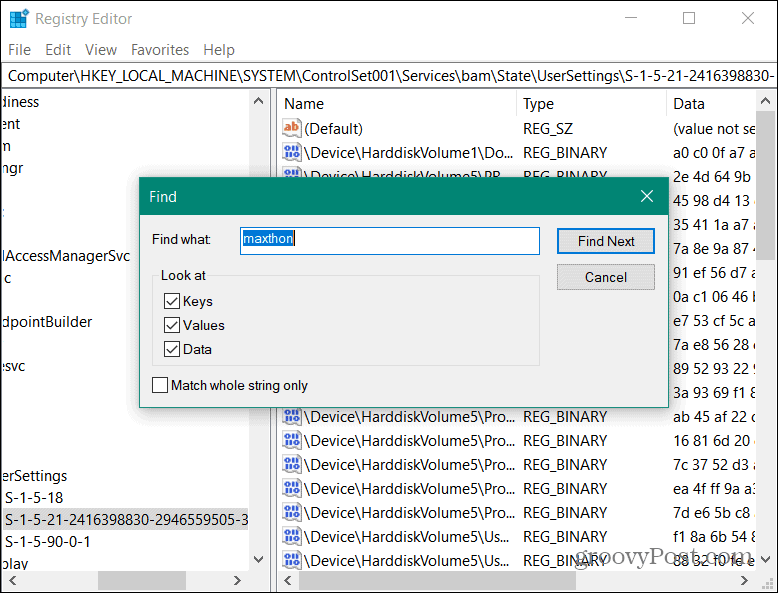

When an entry is found, go ahead and hit Delete. Then hit F3 to Find the next one and continue.
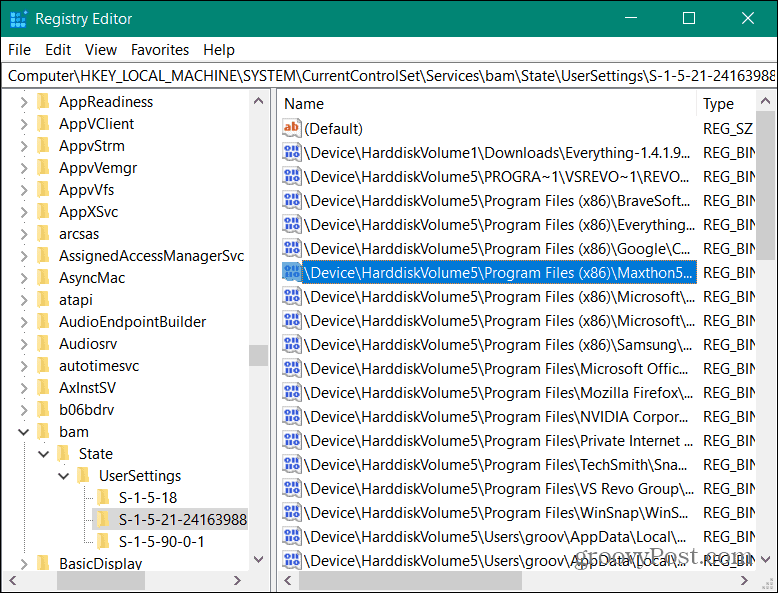

Continue deleting entries until the full Registry has been searched. I prefer to clean the Registry myself versus using a Registry cleaner program. A Registry cleaner utility can often delete important entries you need for a program to work.
Be careful while in the Registry and deleting entries, though. I don’t recommend this for a beginner at all. But if you’re a power user and know Windows really well, it’s an effective method.
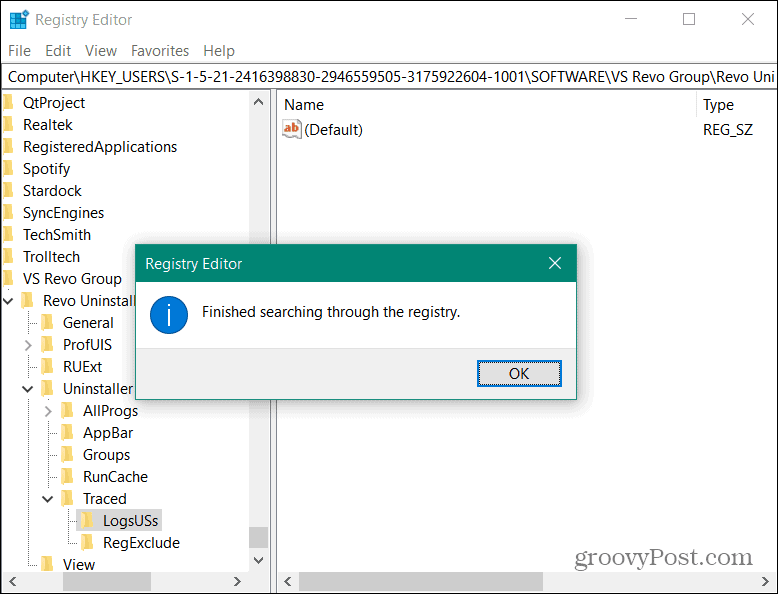

17 Comments
Leave a Reply
Leave a Reply







Ziggy
February 21, 2012 at 2:52 pm
Hi Brian… Another tool that I use (and somewhat similar to Revo Uninstaller) is Iobit Uninstaller 2.1 which also creates a Restore Point prior to any unistall. These people also have a free program called ToolBox, with some handy features
http://www.iobit.com/products.html
To check up on registry remnants I use Auslogics Registry Cleaner Free, which is fairly mild but effective. Ccleaner also comes with a registry cleaner.
https://www.auslogics.com/en/software/registry-cleaner/
As always create a System Restore Point and, if uncofortable about playing with the registry, then leave well alone.
I can live with some scraggly leftover entries, but I wouldn’t do too well with a broken down PC. Better safe than sorry…
Brian Burgess
February 21, 2012 at 7:16 pm
Hey Ziggy! I’ve heard of iOBit but haven’t used it. I will check it out. I started using the free version of Revo Uninstaller 6 years ago then decided to upgrade.
It’s hard for me sometimes though, I get stuck in my ways…I mean, I still use Outlook in my home office and haven’t worked in a corporate environment for 8 years!
I am hesitant to recommend any type of registry cleaner though. I know some people swear by them, but if I do it myself I know what is happening more.
This method also works perfect for removing all remnants of malicious software as well.
Mike
February 22, 2012 at 12:53 pm
When I saw the headline to this article from the newsletter, Revo Uninstaller immediately came to mind. I’ve been using it for years and it’s excellent for doing complete uninstalls. I’m still surprised how much is left behind from using Windows’ conventional uninstaller.
I use CCleaner to clean the registry after doing an uninstall. Its registry cleaner is safe and will prompt you to do a backup before it removes those obsolete entries.
Great article! I’m looking forward to many more.
Guy
February 23, 2012 at 12:58 am
Here in the UK, I have been using the free version of Revo for years too! It is a good solid product that has never let me down. I have balked at paying $39 to upgrade – the free version may be commercially too good perhaps!
PS. Love GroovyPost.
VOXPOP
June 1, 2012 at 11:38 am
hi Brian
i use revo uninstaller, free version. i have uninstalled a couple of programs that when i got to the ‘left over’ section had 680 files that needed to be checked in the little boxes!! i would have been there for a month..is there any way of avoiding checking each little box 680 times??? btw that is not an exageration. (680)
thanks
Brian Burgess
June 5, 2012 at 4:24 pm
@VOXPOP: Not that I know of. I know some programs leave a TON of leftovers. The Pro version makes it easier by grouping them all together.
Tony
June 21, 2013 at 12:45 am
I use the free version here in the UK, and when I get to the ‘left over’ section, there is a ‘Delete All’ check box. Not sue which version it is, but I update it regularly.
Brian Burgess
June 21, 2013 at 1:04 am
Yup. There’s nothing wrong with the free version. It removes everything it finds … the same as Pro. There’s just more features in the Pro version.
But for the bottom line — finding a lot of the extra crap left behind, the free version get’s it done!
VOXPOP
June 5, 2012 at 6:50 pm
thanks brian for the reply
GP
July 3, 2013 at 1:22 pm
Wonderful article! Thank you Brian! I am the computer geek in our house, but this will make it easy to share and explain to my husband who will tell you he is “a bonafide techtard!” Thank you again for the easy to understand instructions and screenshots! :)
Dave
August 19, 2013 at 2:44 pm
Revo is good but sometimes misses a few vestigial items in the registry that can be disposed of manually on a search.
danger0boys
September 29, 2013 at 1:38 am
I have been using Your Uninstaller, but it missed a lot of keys in the registery, can this be done manually ?
Brian Burgess
September 29, 2013 at 3:21 am
Start with using VoidTools Everything: http://www.voidtools.com/download.php
That will allows you to find and delete left over files and folders.
After that start with the section in my article above — Manually Clean Registry, it shows you step by step how to clean it up.
Always make sure to back it up first!
Tai
July 4, 2016 at 11:02 am
I took your advice on the voidtools and after downloading and right be for install i noticed what seemed strange to me is that the port 15485 TCP was already listed in the option box which when I Googled that port number, it was a [trojan] Kilo.Remote Access. It made me suspicious. Why would this software need to be listening in on this particular port number ?
Steve Krause
July 4, 2016 at 11:21 am
EVERYTHING is a search engine tool for your computer. Should not have a port open…. Did you just download it from the site?
holdum333
July 21, 2016 at 7:18 pm
Hi @Brian! kudos to you my friend! That is one of the most complete tutorials on removing programs that I have ever seen any where, on any help forum. Nicely done @Brian
I use those exact procedures. See you on http://windows10forum.com/
Thank you!
Michael Burks
November 12, 2020 at 5:21 pm
I would like to know how Revo responds to a program that has been upgraded. I fell into what could have been a serious trap with another uninstaller. I did an iTunes update and at the end the uninstaller popped up a box asking me if I wanted to do a clean up. Well sure. NO. It removed every trace of the newly updated iTunes. Fortunately it was restorable. An uninstaller should NOT confuse an update with a deletion.